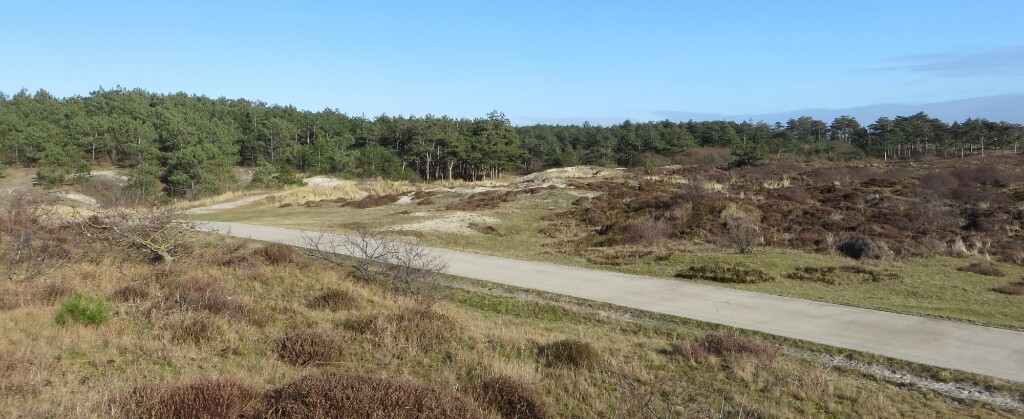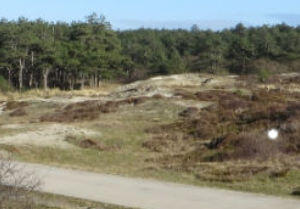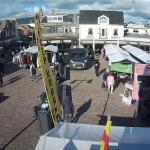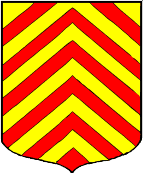
Peter Boer began – who wrote research reports on both the Dr. Van Steijn Forest and the Lion’s Den Forest – at the Netherlands Institute for Sea Research. Later became a biology teacher at Pascal College in Zaandam and is now a visiting researcher at Naturalis Biodiversity Center in Leiden and curator for the Netherlands at www.antweb.org. The 32-page study on the Lion’s Den Forest is available for download.
Leeuwenkuilbos: another piece of Schoorls forest to be razed?
Erased
‘When it comes to cutting down trees in the Schoorl Dunes, you have proponents and opponents and a large group who have no opinion (yet). This is quite understandable. In fact, it depends on what sources you take to make a judgment. In 2020, the Van Steijn Forest went to ground and now the Lion’s Pit Forest is in danger of suffering the same fate. On the North Holland province’s map regarding the 2022 Nature Management Plan, the Leeuwenkuil forest has been erased. But now it is still there. The forest is located on the east side of the T-junction of the Dr. Van Steijnweg and the Schoorlse Zeeweg. The forest is surrounded by more than 450 acres of treeless plain. Planners believe that should be added to that the 18 acres of the Lion’s Pit Forest. This expands the treeless plain by 4%. So does a felled Lion’s Den forest add anything? Yes, say the planners. The then bare dune on which the Leeuwenkuilbos now stands will then drift, bringing dynamism to the area. The likelihood that the Schoorlse Zeeweg will then be regularly overrun has not been factored in.
‘Nature restoration’ not needed
The intervention “the Lion’s Den forest must go” falls under the term “nature restoration” among nature developers. One wonders what nature then needs to be restored. A kind of nature that once was and now must be restored to its former state? So how far back do you have to go in the history of the dune area? Either way, you will never get back what once was. Impossible.
“Now look closely,” I regularly hear, “it’s all boring anyway, such a pine forest!” This is indeed true for many. Especially with those who prefer to see lots of flowers and butterflies rather than a seemingly monotonous pine forest, of which we already have enough in the Netherlands. Yet only a few percent of Dutch forests consist of black pines and maritime pines such as in the Lion’s Den forest.
1000 species
I spent a year researching in the forest and found 743 different species of fungi, plants and animals. If I were to continue for another year, I would definitely exceed 1,000. For a monotonous forest, that seems like a lot. But anyway more than on the treeless plain around it. The sad thing is that policymakers frame their policies using – exclusively – plants, butterflies and vertebrates. Taken together, these constitute less than 16% of the total number of species I encountered, while in quantity they represent only a pittance of the total. Together, the fungi, plants and animals in the 1934 planted forest have developed into a diverse, more or less stable community of life, in contrast to the immediate surroundings that are still under stress after all kinds of nature restoration interventions.
Smell, see, feel, hear
For those who still find the forest really boring, I say, “If we leave the forest alone now, a more diverse, mixed deciduous/needle forest will emerge.” It is already on its way to that. And then we ask the question, “Which do you prefer: a forest like this or a slightly larger treeless plain?” Or do you consider all these arguments of secondary importance and let your feelings judge you. Because you can also observe the forest differently, by smelling it, seeing it, feeling it and hearing it. Then the forest is experienced. The value it then has results in an emotion of well-being, from which the thought “I love this forest” arises. Policymakers do not take such emotions seriously. Why really? If we humans are to decide the future of a forest, why do we ignore the opinion of this group?
By the way, who owns the forest anyway? Of those who pursue utopias? Of those who love the forest? Or of the silent living community in the forest?
You can re-read the guest column at www.schoorlsebosmoetblijven.nl and www.duinstichting.nl
Guest column Peter Boer for Dune Foundation



















